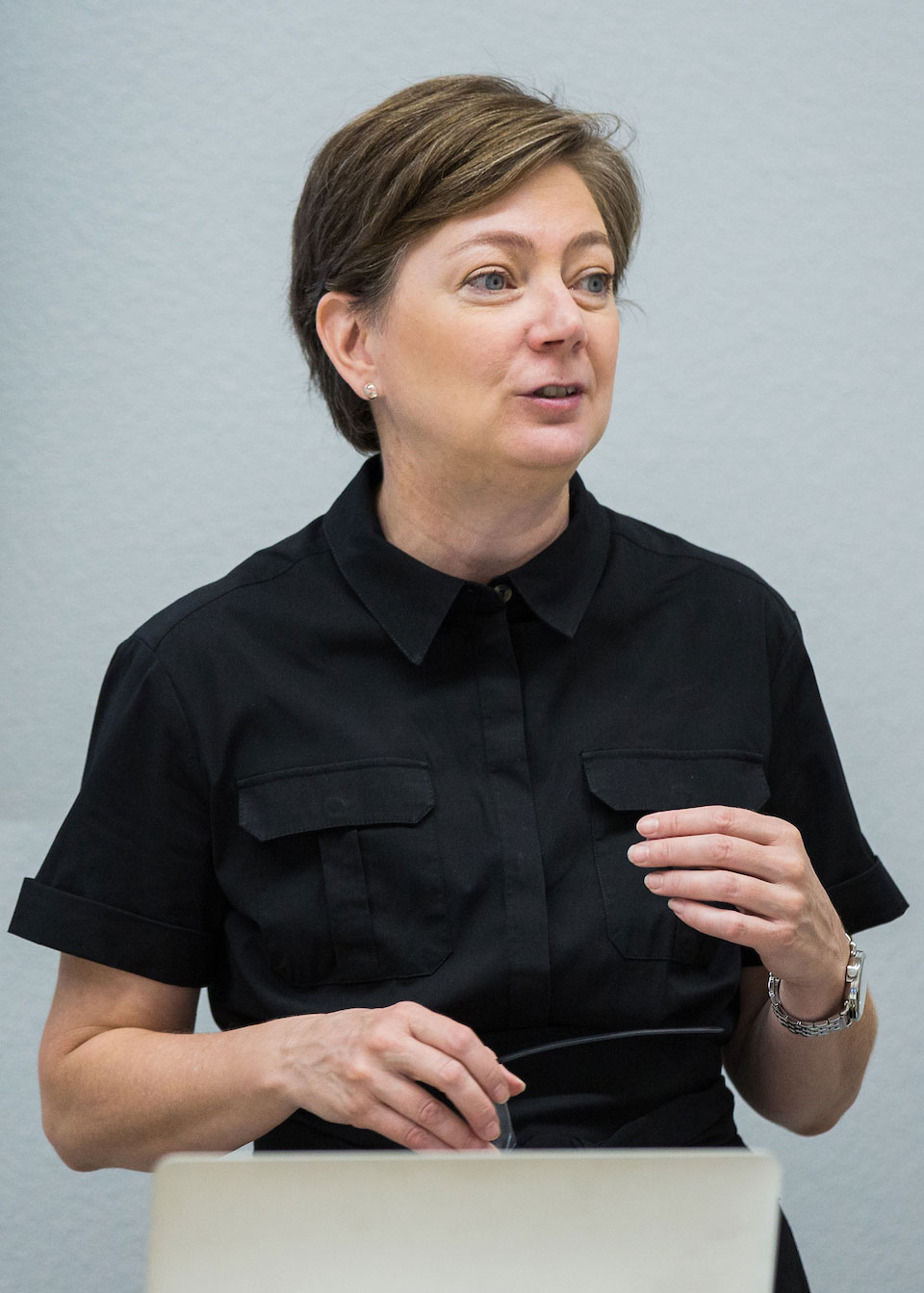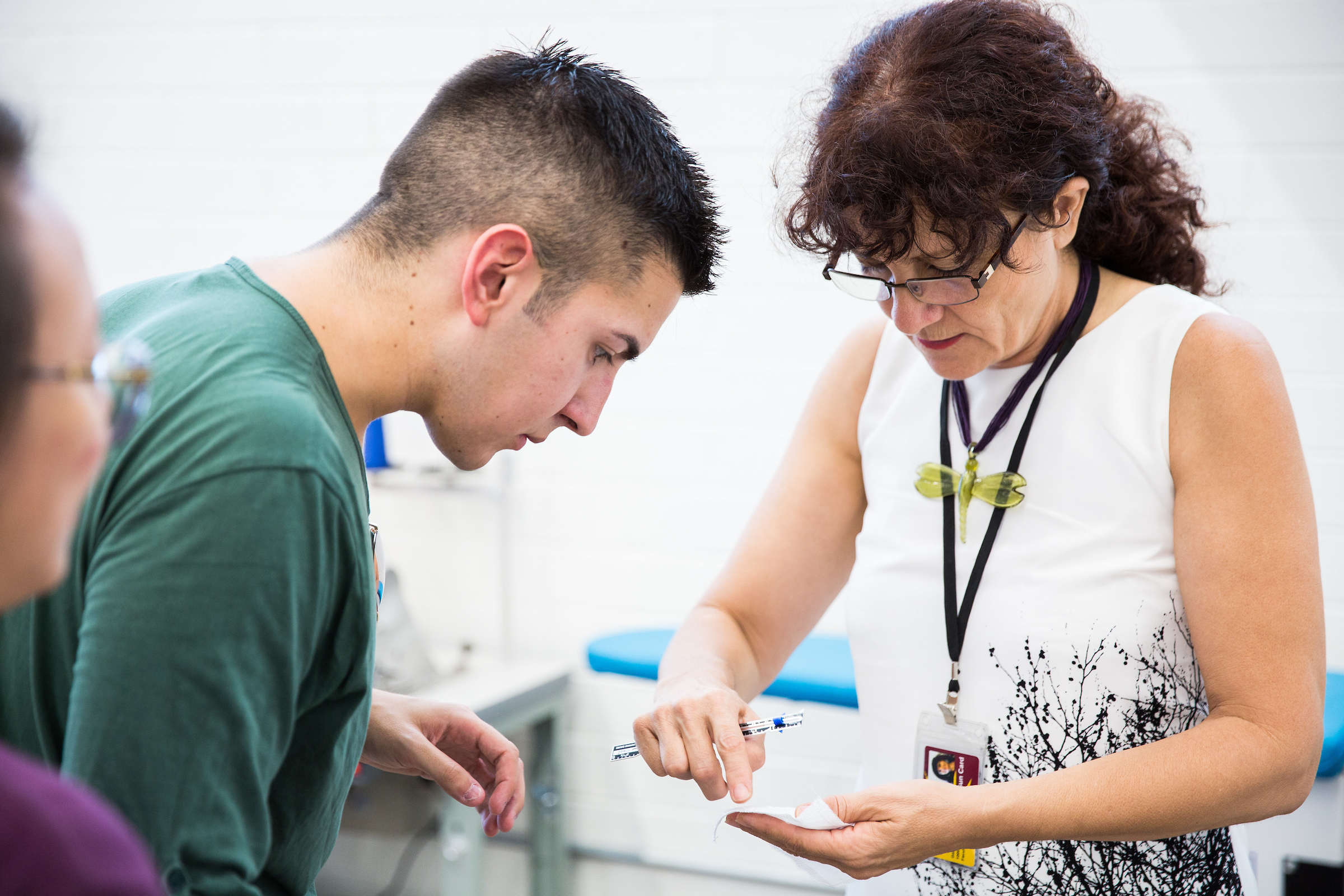Herberger Institute makes community part of the fabric of new fashion program

Dennita Sewell, director of Arizona State University’s fashion program, stood at the front of her global fashion industry class, impeccably dressed — as one might expect of someone whose career has been dedicated to fashion.
In addition to helming the brand-new fashion program at ASU, Sewell also serves as curator of fashion design at the Phoenix Art MuseumDennita Sewell received her master's in costume design from Yale and worked at the Metropolitan Museum of Art as a collection curator prior to coming to the Phoenix Art Museum., where she oversees one of the premier collections of fashion in the country. For her, fashion has been a lifelong pursuit.
“I started sewing before I could read,” Sewell said. “It was going on in our house and it was part of what we did, so it was in me like a language from very early.”
She hopes to pass the patience and influence of her mother and her mentors on to the 85 students enrolled in the Herberger Institute for Design and the Arts program.
During the first week of classes she lectured some of those students on the consumer cycle and took time to ask what their career aspirations are.
Journalism junior Leah Goldberg quickly shared her interest in the coverage of fashion and her hopes that the fashion-design courses will be an area of focus alongside her journalism degree.
“News got out that (Sewell) was going to be the head of the fashion program at ASU,” Goldberg said. “So I decided to interview her for a podcast, and we got to talking and I was like, ‘This is something that I’d definitely be interested in.’ ”
Epicenter for Phoenix fashion industry
For Herberger Institute Dean Steven Tepper, the question was how to build a program that students were requesting that could also be co-created with the talent of the Valley.
“We want to build this with our community from the beginning. We want to be an epicenter for fashion in Phoenix, for people in the fashion industry to connect through and with our students and to drive the fashion scene in this city,” Tepper said.
Dennita Sewell
Until the fall 2017 semester, there was no four-year degree in fashion design offered at a state-university level in Arizona. Sewell saw a desire for the program from students and an opportunity to keep fashion talent in state.
“The way people are shopping is transitioning from brick-and-mortar to online and the rapid pace at which fashion is being created,” Sewell said. “Part of the curriculum that we’ve organized is seeing what new technologies are and keeping up or leading those changes and engaging these in our program.”
Sewell said she would like to see the program train graduates for a global industry that’s worth $698 billion worldwide, according to the World Bank 2010 report.
To that end, the degree path is organized into track specialization: sustainability, technology, marketing and merchandising, fabrics and fibers, management and leadership, costuming and business and entrepreneurship.
“It’s a wonderful time to be starting a program where we can really work with industry peoples,” Sewell said. “We can respond to that and provide students in Arizona with connections, with a curriculum that is really valid to the industry as it’s transitioning, I think we have high hopes for the expected impact of this program.”
Building from the basics
Visiting Assistant Professor Galina Mihaleva, who made the decision to return to ASU from Nanyang Technological University in Singapore, equates fashion to the designing of a second skin. She said it begins with the basics like her apparel construction course.
“The aim of this program is to create very fundamental and very basic training and then give the opportunity to students to channel out to collaborate and to become more interdisciplinary,” said Mihaleva, who had worked for the dance department in the then-Herberger College and graduated from ASU with a master’s in fine arts.
During the first week of class she was already putting these fundamentals into practice, leading a class of 20 students in apparel construction and in their creation of individual “clothing construction bibles.” Students would sew nearly 50 different seams and keep them together in their “bibles.”
Patiently, Mihaleva walked students like junior fashion design major Richard Ware through the importance of a 5/8-inch seam allowance as they learned to use the industry-standard Juki sewing machines.
Visiting Assistant Professor Galina Mihaleva talks fashion design junior Richard Ware through his first seam sewing assignment in her apparel construction class at the Tempe Center on August 29. Photo by Deanna Dent/ASU Now
“This is my first sewing class. I’ve done prerequisites, so this is my first everything!” Ware said excitedly.
Nearby, industrial engineering junior Mohamed Razouki ironed his fabric prior to sewing his first seams. He recognized the similarities between his own major and fashion design.
“You have to be precise when you construct material or break down equations or formulas,” Razouki said. “Also patience, because like in engineering there are certain problems that take a long time for you to solve, and the same thing with fashion — if you don’t have patience half of your things won’t come out.”
For Mihaleva, teaching goes both ways.
“I have a lot learn from them,” she said. “I’m looking forward to our students at ASU. To learn from them and to inspire them.”
More Arts, humanities and education

ASU professor's project helps students learn complex topics
One of Arizona State University’s top professors is using her signature research project to improve how college students learn science, technology, engineering, math and medicine.Micki Chi, who is a…

Award-winning playwright shares her scriptwriting process with ASU students
Actions speak louder than words. That’s why award-winning playwright Y York is workshopping her latest play, "Becoming Awesome," with actors at Arizona State University this week. “I want…

Exceeding great expectations in downtown Mesa
Anyone visiting downtown Mesa over the past couple of years has a lot to rave about: The bevy of restaurants, unique local shops, entertainment venues and inviting spaces that beg for attention from…



